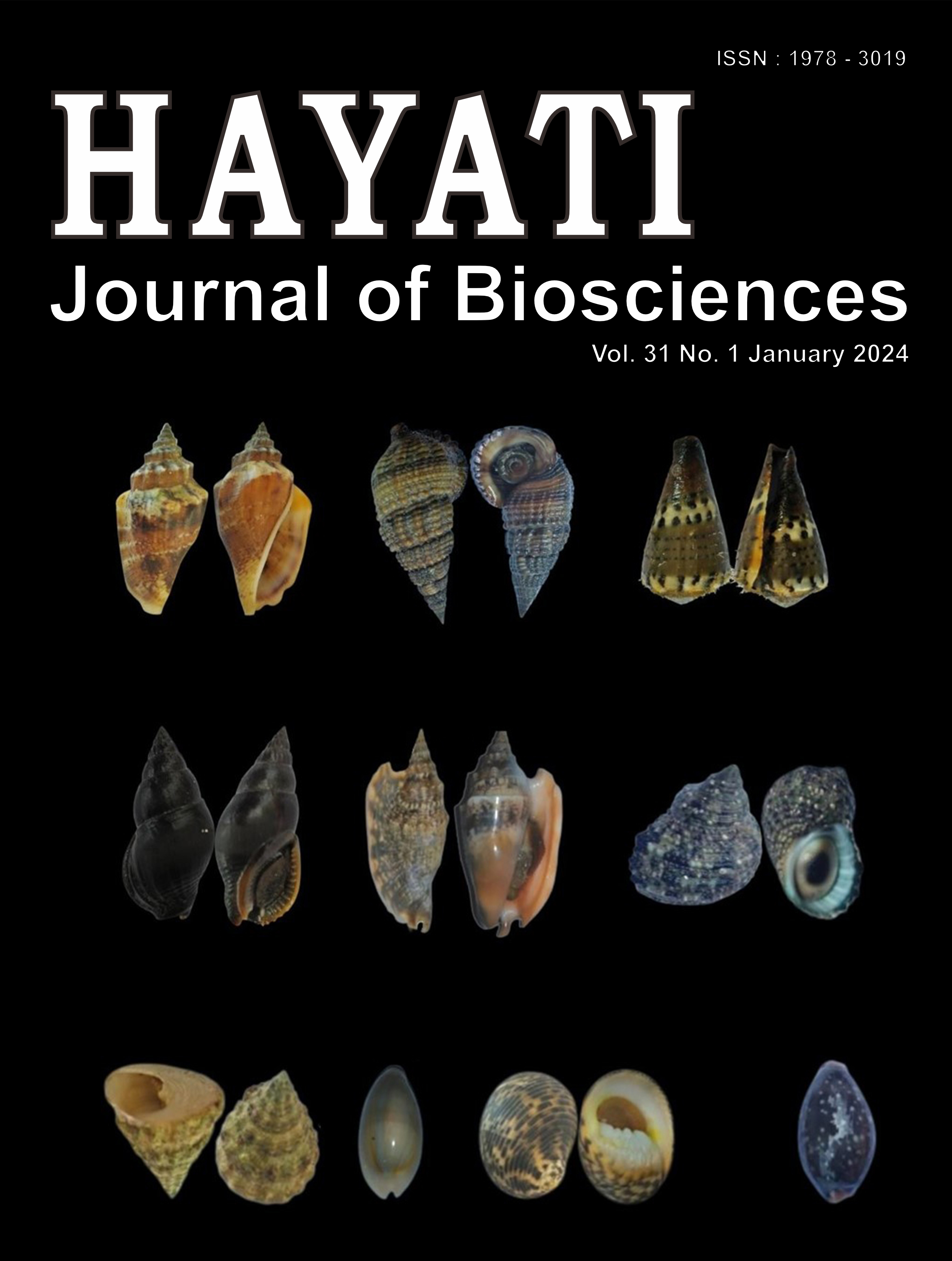Expression of APP, CDK5, and AKT1 Gene Related to Alzheimer Disease in Brain of Long-tailed Macaques
Abstract
Amyloid plaques and Neurofibrillary Tangles (NFTs) are known to be key pathological features of Alzheimer disease. To gain a better understanding of this disease, studies were carried out on the Indonesian primates, the long-tailed macaques, using a spontaneous Alzheimer's disease model. Examining and identifying genetic markers involved in plaque formation and NFTs in long-tailed macaques is necessary to reveal their physiological processes. In this study, the expression of genes involved in the development of amyloid plaque (Amyloid Precursor Protein (APP)) and those that control the phosphorylation of tau protein (CDK5 and AKT1) was examined in the long-tailed macaque brain. This study showed that APP, CDK5, and AKT1 may potentially be developed as genetic markers of Alzheimer's disease. Long-tailed macaques exhibited the development of amyloid plaque in the aging brain based on the analysis of the gene expression profile of its biomarker. Furthermore, long-tailed macaques can be optimized for neurodegenerative models.
Downloads
Copyright (c) 2023 Lis Rosmanah, Uus Saepuloh, Sela Septima Mariya, Irma Herawati Suparto, Wasmen Manalu, Adi Winarto, Huda Shalahudin Darusman

This work is licensed under a Creative Commons Attribution-NonCommercial 4.0 International License.
HAYATI J Biosci is an open access journal and the article's license is CC-BY-NC. This license lets others distribute, remix, tweak, and build upon author's work, as long as they credit the original creation. Authors retain copyright and grant the journal/publisher non exclusive publishing rights with the work simultaneously licensed under a https://creativecommons.org/

























.png) IPB University
IPB University Department of Biology
Department of Biology The Indonesian Biological Society
The Indonesian Biological Society 

